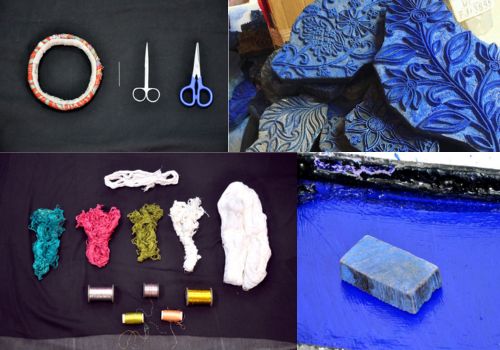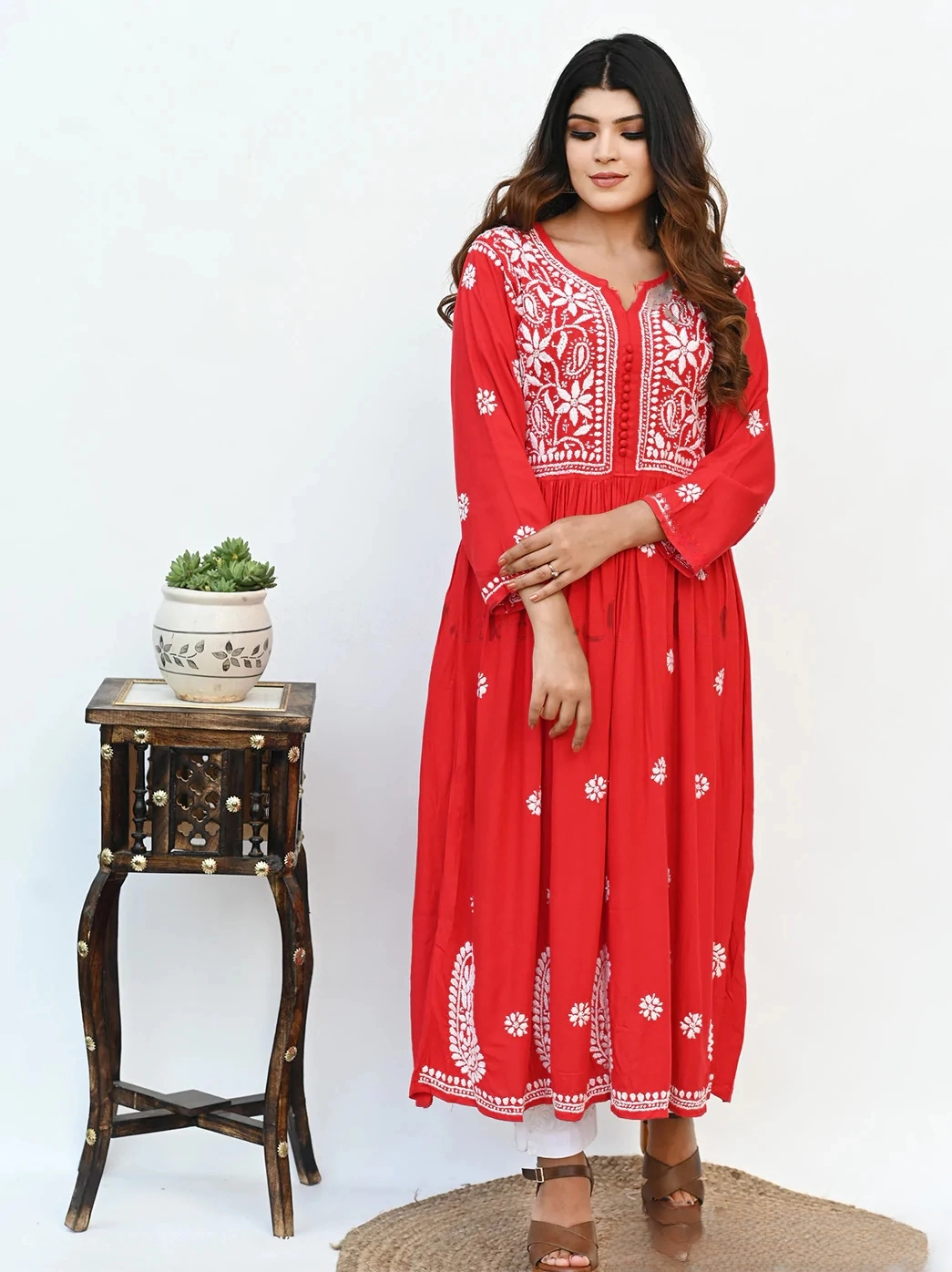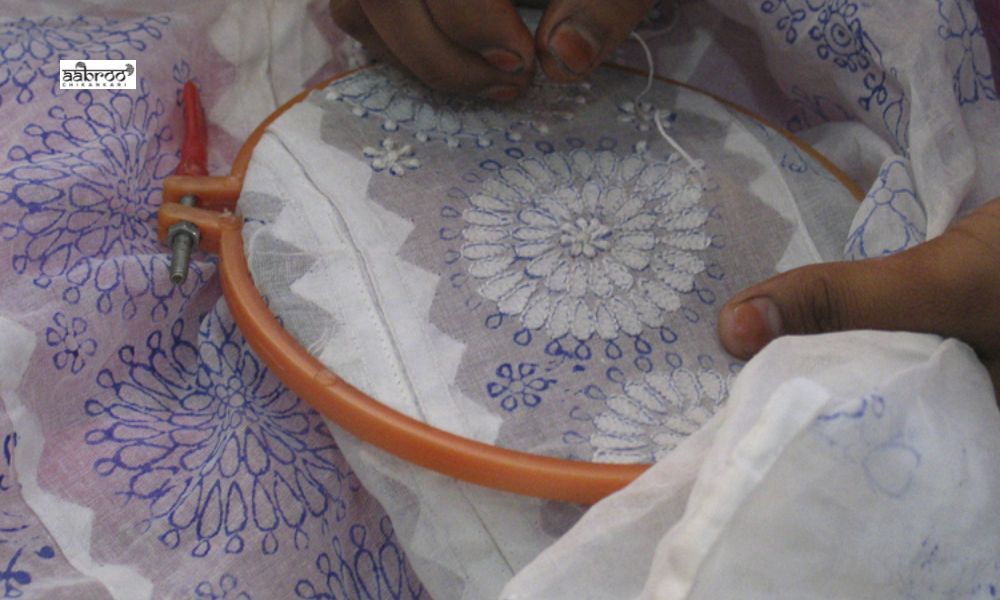The art form of Chikankari is an elongated process that requires skilful teamwork. As per that, at Aabroo Chikankari, we focus on delivering the best quality Lucknowi Chikankari work that resonates with its original form. It’s likely to say that Lucknow (a city in Uttar Pradesh) is the heart of the Chikankari art form as its origin lies here. However, you can also find this art form in other cities as well.
There are various techniques on which artisans work to complete a full design of Chikankari. It includes block printing on fabric, embroidery or needlecraft work, and adding embellishments. Moreover, it may seem that the process is simple, yet it needs years of experience to achieve perfection in the art of Chikankari.
See Also: Handcraft Vs. Machine Embroidery
Process of Manufacturing Lucknowi Chikankari

The process of creating, designing and finishing a whole piece of Chikankari work involves several steps. An artisan will start with the basic work and, further take it to the last process that includes finishing and detailing.
Here are the steps that include processing & manufacturing of Lucknowi Chikankari –
- Fabric Material – The first and most important task of initializing the process of Lucknowi Chikankari is choosing the fabric. Most commonly, the artwork of Chikankari is design on different fabrics such as – cotton, chiffon, silk, muslin, etc.
- Design & Measurement – Secondly, it’s important to cut and style your fabric to know where the embroidery work needs to be done. Let’s say you want a Chikankari kurta or an Anarkali; it’s certain to cut the fabric in the same proportion.
- Block Printing on fabric – Now, the designs that need to be embroidered on the fabric should be outlined first. Similarly, the artisans use the block printing method to impress the designs on the fabric on which stitches will be imply.
- Embroidery & needlework – Once the fabric is ready with an imprint of beautiful motifs design, now it’s time to start with the actual embroidery work. The basic requirements for making different stitches on the fabric are – a needle, thread (any colour), and frame to adjust the fabric in place. Also, note that more than 30 types of Chikankari stitches can be done with the right techniques.
- Washing & Drying – After the fabric is designed with beautiful Chikankari embroidery, it is sent for washing and drying. Some commoners also use the term “charakh”, which means polishing and ironing the product as the final step.
- Finalizing the Product – Before the finished material is sent for sale and delivery, it’s important to check it for the final time. More so, the removal of extra thread to give a clean look is essential prior to its packaging process.
There can be some additional steps, too, that may include styling and designing the finished product. More so, the artisans may add some extra embellishments such as – zari, gota patti, mukeish, jaali work and others.
How to tell if it’s Chikankari design?
Traditionally, the art of Chikankari was famous for making beautiful stitches with white thread on white fabric. Lately, with new inventions and staying upto date with the current trends, more colours were added to the original form of Lucknowi Chikankari.
See Also: White Chikankari: The Traditional Approach
There are two ways in which you can determine if it’s Chikankari work or not –
- Firstly, most of the Chikankari work is done with the hands of skilful artisans. Thus, make sure the work is handcrafted with needlework.
- Secondly, the stitches of Lucknowi Chikankari majorly consist of beautiful designs such as – flowers, leaves, and geometrical patterns as such.
The most important thing about the best quality Lucknowi Chikankari is its style is always elegant. Every experienced artisan of Chikankari art knows that if there’s no finishing in the stitches, then it won’t look elegantly beautiful, which is the prime motto of the work.
Read Also: Embroidery & Needle Work: Best Chikankari Handicraft
What raw materials are needed in Chikankari?

The making process of Lucknowi Chikankari includes some basic tools and equipment. First of all, it is accessible using synthetic and natural colour threads that do not lose their colour after washing. Also, the colours depend upon the base of the fabric and how they differ in material.
Let’s say you are using a silk base fabric with a dull shade. So to make the colours look elegant and beautiful, the artisan will choose something accordingly. More so, the common raw material for Chikankari making includes –
- Fabric material (any)
- Needle & Thread
- Scissors
- The frame (to adjust the cloth)
- Violet dye (for block printing)
While doing the complete work of Lucknowi Chikankari, it’s important for workers to be precise with the stitches. As there are about 36 types of stitches in Chikankari, that doesn’t mean you can include them all in a single piece of fabric.
Bottom Line
Some people tend to know about its making process when you are looking to buy Lucknowi Chikankari suits and dresses. It’s useful to gather useful information in order to properly use the product without any wear or tear. Likewise, Lucknowi Chikankari is not just popular as an art form but for its importance of following an old culture.
Related Articles:
Chikankari VS. Lucknowi Chikankari

